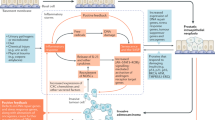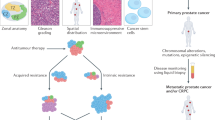Abstract
Benign prostatic hyperplasia (BPH) is one of the most common diseases affecting aging man. Attempts have been made to clarify the etiology and pathogenesis and, to that end, experimental models have been developed. To date, in vitro and in vivo models have been used, depending on the concept of the study. Spontaneous animal models are limited to the chimpanzee and the dog. Ethical and financial factors restrict the applicability of these models. The hormonal-induced canine BPH model is a good alternative that closely resembles human BPH in many aspects. The experimental models currently used for studying BPH are reviewed.
This is a preview of subscription content, access via your institution
Access options
Subscribe to this journal
Receive 4 print issues and online access
$259.00 per year
only $64.75 per issue
Buy this article
- Purchase on Springer Link
- Instant access to full article PDF
Prices may be subject to local taxes which are calculated during checkout
Similar content being viewed by others
Author information
Authors and Affiliations
Corresponding author
Rights and permissions
About this article
Cite this article
Mahapokai, W., van Sluijs, F. & Schalken, J. Models for studying benign prostatic hyperplasia. Prostate Cancer Prostatic Dis 3, 28–33 (2000). https://doi.org/10.1038/sj.pcan.4500391
Received:
Accepted:
Published:
Issue Date:
DOI: https://doi.org/10.1038/sj.pcan.4500391
Keywords
This article is cited by
-
Changes in specific serum biomarkers during the induction of prostatic hyperplasia in dogs
BMC Veterinary Research (2019)
-
Intérêt et perspectives d’utilisation de la toxine botulique dans l’hypertrophie bénigne de la prostate
Pelvi-périnéologie (2008)
-
Intracranial glioblastoma models in preclinical neuro-oncology: neuropathological characterization and tumor progression
Journal of Neuro-Oncology (2007)



